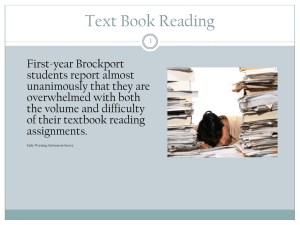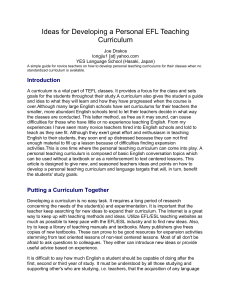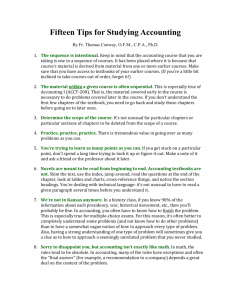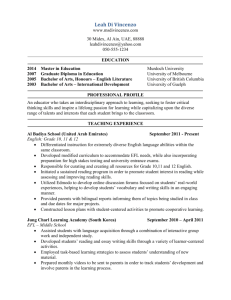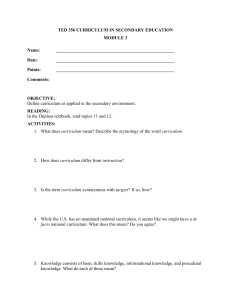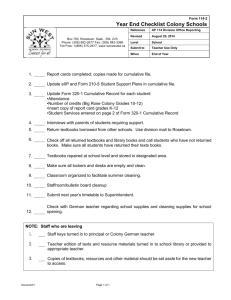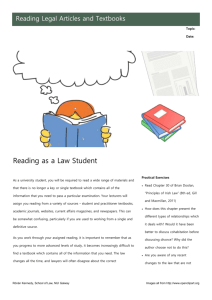The Investigation of Vocabulary Input in High School EFL Textbooks
advertisement
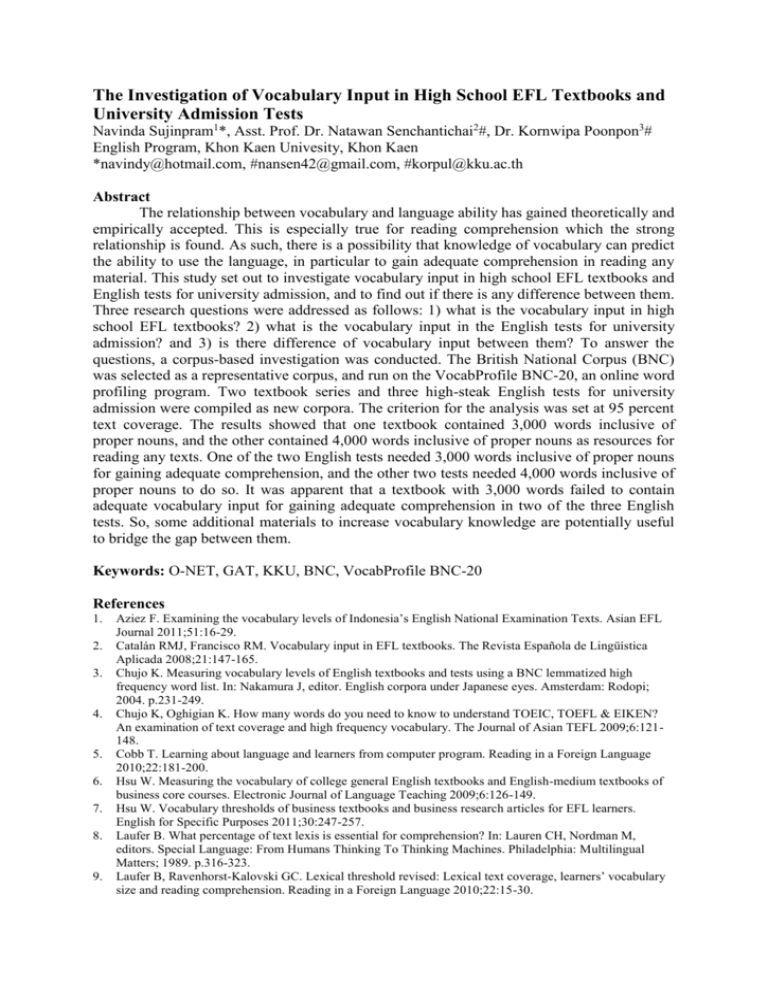
The Investigation of Vocabulary Input in High School EFL Textbooks and University Admission Tests Navinda Sujinpram1*, Asst. Prof. Dr. Natawan Senchantichai2#, Dr. Kornwipa Poonpon3# English Program, Khon Kaen Univesity, Khon Kaen *navindy@hotmail.com, #nansen42@gmail.com, #korpul@kku.ac.th Abstract The relationship between vocabulary and language ability has gained theoretically and empirically accepted. This is especially true for reading comprehension which the strong relationship is found. As such, there is a possibility that knowledge of vocabulary can predict the ability to use the language, in particular to gain adequate comprehension in reading any material. This study set out to investigate vocabulary input in high school EFL textbooks and English tests for university admission, and to find out if there is any difference between them. Three research questions were addressed as follows: 1) what is the vocabulary input in high school EFL textbooks? 2) what is the vocabulary input in the English tests for university admission? and 3) is there difference of vocabulary input between them? To answer the questions, a corpus-based investigation was conducted. The British National Corpus (BNC) was selected as a representative corpus, and run on the VocabProfile BNC-20, an online word profiling program. Two textbook series and three high-steak English tests for university admission were compiled as new corpora. The criterion for the analysis was set at 95 percent text coverage. The results showed that one textbook contained 3,000 words inclusive of proper nouns, and the other contained 4,000 words inclusive of proper nouns as resources for reading any texts. One of the two English tests needed 3,000 words inclusive of proper nouns for gaining adequate comprehension, and the other two tests needed 4,000 words inclusive of proper nouns to do so. It was apparent that a textbook with 3,000 words failed to contain adequate vocabulary input for gaining adequate comprehension in two of the three English tests. So, some additional materials to increase vocabulary knowledge are potentially useful to bridge the gap between them. Keywords: O-NET, GAT, KKU, BNC, VocabProfile BNC-20 References 1. 2. 3. 4. 5. 6. 7. 8. 9. Aziez F. Examining the vocabulary levels of Indonesia’s English National Examination Texts. Asian EFL Journal 2011;51:16-29. Catalán RMJ, Francisco RM. Vocabulary input in EFL textbooks. The Revista Española de Lingüística Aplicada 2008;21:147-165. Chujo K. Measuring vocabulary levels of English textbooks and tests using a BNC lemmatized high frequency word list. In: Nakamura J, editor. English corpora under Japanese eyes. Amsterdam: Rodopi; 2004. p.231-249. Chujo K, Oghigian K. How many words do you need to know to understand TOEIC, TOEFL & EIKEN? An examination of text coverage and high frequency vocabulary. The Journal of Asian TEFL 2009;6:121148. Cobb T. Learning about language and learners from computer program. Reading in a Foreign Language 2010;22:181-200. Hsu W. Measuring the vocabulary of college general English textbooks and English-medium textbooks of business core courses. Electronic Journal of Language Teaching 2009;6:126-149. Hsu W. Vocabulary thresholds of business textbooks and business research articles for EFL learners. English for Specific Purposes 2011;30:247-257. Laufer B. What percentage of text lexis is essential for comprehension? In: Lauren CH, Nordman M, editors. Special Language: From Humans Thinking To Thinking Machines. Philadelphia: Multilingual Matters; 1989. p.316-323. Laufer B, Ravenhorst-Kalovski GC. Lexical threshold revised: Lexical text coverage, learners’ vocabulary size and reading comprehension. Reading in a Foreign Language 2010;22:15-30. 10. Nation ISP. Learning vocabulary in another language. Cambridge: Cambridge University Press; 2001. 11. Nation ISP. How good is your vocabulary program? ESL Magazine 2001;4:22-24. 12. Nation ISP. How large a vocabulary is needed for reading and listening? The Canadian Modern Language Review 2006;63:59-82. 13. National Institute of Educational Testing Service. About NIETS [Portable data format]. 2009 [cited 2013 Nov 19]. Available from http://www.niets.or.th/uploadfiles/uploadfile/5/5113f2fc40d9b7ccbf26972226c1a536.pdf 14. National Institute of Educational Testing Service. 2009 O-NET statistics [Internet]. c2010 [cited 2012 Jul 1]. Available from http://www.niets.or.th/uploadfiles/uploadfile/9/d236a3a2deb4e08ec19b3a40c9acc3ed.pdf 15. National Institute of Educational Testing Service. 2010 O-NET scores classified according to provinces [Internet]. c2011 [cited 2012 Jul 1]. Available from http://www.niets.or.th/uploadfiles/uploadfile/9/40faf7edfb767401bd0b85a4fb44cabf.pdf 16. National Institute of Educational Testing Service. 2011 O-NET scores classified according to Educational Service Area [Internet]. c2012 [cited 2012 Jul 1]. Available from http://www.niets.or.th/index.php/research_th/download/28 17. Phanphruk S. The application of O-NET scores on students’ school assessment [PowerPoint]. 2013 [cited 2013 Nov 19]. Available from http://www.slideshare.net/tadchanan/o-net-16157981 18. Poonpon K, Honsa S JR, Cowan RA. The teaching of academic vocabulary to science students at Thai universities. Studies in Languages and Language Teaching 2001:51-63. 19. Read J. Assessing vocabulary. Cambridge: Cambridge University Press; 2000. 20. Wiriyachitra A. English language teaching and learning in Thailand in this decade. Thai TESOL Focus 2002;15:4-9.
